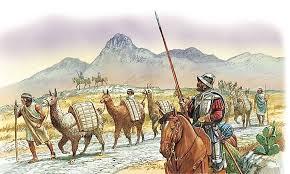The silver influx into Europe during the 16th and 17th centuries was one of the most transformative economic events in history. Fueled by vast quantities of silver from the mines of the Americas, particularly Potosí and Zacatecas, this sudden surge in wealth reshaped the continent’s economies, trade networks, and social structures. While the influx financed empires and spurred the growth of global trade, it also triggered widespread inflation, known as the Price Revolution, which destabilized traditional economic systems. This post explores how the flood of silver into Europe created immense wealth, disrupted economies, and left a lasting legacy on the rise of modern capitalism.

How the Influx of Silver Transformed Europe
- The Flow of Silver into Europe:
- After the Spanish conquest of the Americas, silver from mines like Potosí (Bolivia) and Zacatecas (Mexico) was transported to Europe, primarily via Spanish ports such as Seville.
- By the mid-16th century, Spain had become the primary gateway for silver entering European markets.
- Financing Empires and Wars:
- The influx of silver enabled Spain to finance its imperial ambitions, including wars against Protestant states, the Ottoman Empire, and the construction of a vast colonial empire.
- Other European powers, such as England and France, also benefitted indirectly by trading with Spain or raiding its treasure fleets.
- Emergence of a Cash Economy:
- Silver replaced barter and less reliable forms of currency, facilitating the growth of a cash-based economy across Europe.
- Urban centers became hubs of commerce, and the merchant class grew in wealth and influence.
The Economic Consequences of the Silver Boom
- Inflation and the Price Revolution:
- The massive influx of silver caused a sharp increase in the money supply, which led to inflation—a rise in prices for goods and services.
- Essential commodities such as grain, meat, and textiles saw price increases of up to 400% during this period.
- Winners and Losers of Inflation:
- Winners: Landowners and merchants, who could raise prices or profit from increased trade, benefitted from the rising economy.
- Losers: Wage laborers and peasants suffered, as their incomes stagnated while the cost of living soared.
- Economic Inequality:
- The Price Revolution widened the gap between rich and poor, as elites accumulated wealth while the lower classes faced increasing hardships.
- This growing inequality sparked unrest, leading to uprisings and revolts in several European countries.
The Long-Term Impact on European Economies
- The Rise of Capitalism:
- The increased availability of silver fueled the expansion of markets and trade, setting the stage for early capitalism.
- Merchants and financiers gained prominence, particularly in cities like Antwerp, Amsterdam, and London, which became centers of commerce and banking.
- Growth of Banking and Credit Systems:
- The influx of silver encouraged the development of modern banking, as financial institutions were needed to manage and circulate the new wealth.
- Prominent banks, such as the Medici Bank and the Bank of Amsterdam, thrived during this period.
- The Decline of Spain’s Economy:
- Despite controlling vast amounts of silver, Spain’s economy suffered from overdependence on its colonies.
- The wealth from silver was often spent on wars and imports rather than reinvested in domestic industries, leading to economic stagnation.
Social and Cultural Shifts in Europe
- Luxury Consumption:
- The influx of wealth led to increased demand for luxury goods, such as silk, porcelain, and spices, imported from Asia.
- European elites showcased their wealth through art, architecture, and extravagant lifestyles, fueling the cultural achievements of the Renaissance.
- Economic Migration:
- Economic opportunities created by the silver trade attracted migrants to urban centers and port cities, leading to population growth and urbanization.
- However, this migration also exacerbated social tensions in overcrowded cities.
The Global Ripple Effects of European Inflation
- Impact on Global Trade:
- The rising European demand for Asian goods, fueled by silver, strengthened global trade networks.
- The Manila Galleon Trade became a cornerstone of the global economy, linking silver-rich Americas with Asia and Europe.
- Asian Economies:
- As silver flowed eastward, it stabilized the economies of countries like China and Japan, where the metal was in high demand.
- However, the European Price Revolution also highlighted the interconnected nature of global economies, as disruptions in one region could have far-reaching effects.
Lessons from the Price Revolution
- The Dangers of Overreliance on Resources:
- Spain’s experience during the Price Revolution underscores the dangers of relying on resource wealth without investing in sustainable industries.
- The influx of silver temporarily enriched Spain but ultimately weakened its economy in the long run.
- The Role of Inflation in Economic Transformation:
- The Price Revolution demonstrated how inflation can disrupt traditional economic structures and redistribute wealth within societies.
- It also revealed the importance of managing monetary supply to ensure economic stability.
Conclusion: Wealth, Inflation, and Transformation
The Price Revolution was a turning point in European economic history, driven by the influx of American silver. While it brought wealth and opportunity to some, it also exposed the vulnerabilities of overreliance on a single resource and the destabilizing effects of inflation. This period laid the groundwork for the rise of capitalism, the growth of global trade, and the eventual transition to new monetary systems.
